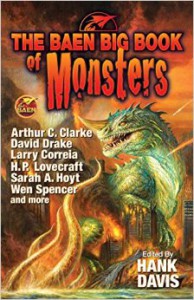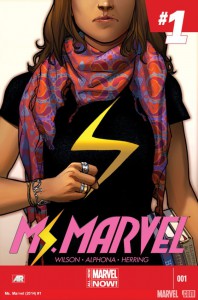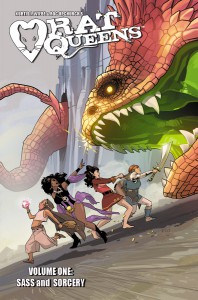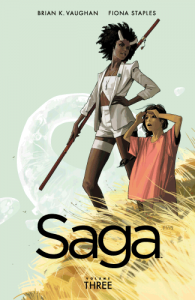written by David Steffen
All of the nominees for this Hugo category this year were also nominees for the Ray Bradbury Award that goes with the Nebulas, which I reviewed over here. At the time, Interstellar wasn’t available to rent yet, so I didn’t review that. So, these are all repeats of that previous set of reviews, except Interstellar which I’ve watched since then.
 1. Edge of Tomorrow, Screenplay by Christopher McQuarrie and Jez Butterworth and John-Henry Butterworth (Warner Bros. Pictures)
1. Edge of Tomorrow, Screenplay by Christopher McQuarrie and Jez Butterworth and John-Henry Butterworth (Warner Bros. Pictures)
Earth is under attack from an alien force known only as mimics, viciously deadly enemies that humans have only one battle against. Major William Cage (Tom Cruise) works in PR for the US military and has been ordered to the frontier of the war in France. The general in charge of the war effort orders Cage to go to the front lines to cover the war. When Cage attempts to blackmail his way out of the mission, he is taken under arrest and dropped at the front with the claim that he had tried to go AWOL and so is quickly forced into service, given only the most passing training in the mechsuits that are standard issue, and dropped into battle with everyone else. This area was supposed to be fairly quiet, but the battle here is intense. Cage manages to kill one of the mimics, but dies in the act, only to wake up earlier in the day when he’d woken on the base in handcuffs after the general had him arrested. He dies again, and again, and again. No one else has any memory of reliving the day except for Rita Vrataski (Emily Blunt), the super-soldier nicknamed “Full Metal Bitch” after she wreaked havoc against the mimics in the only battle against the mimics that the humans have won. She confides that she had won that battle because she had gone through the same thing he had–as long as he dies he will always restart at the same time and place.
I avoided this movie in theaters, because I haven’t really gone to any Tom Cruise movies since he kindof went publicly nuts. But I rented this one since it was nominated. I thought Tom Cruise was back to old form in it, and even if you don’t like it, well you get to see him die literally dozens of times. I thought Emily Blunt was especially good in her role as Rita, powerful but still affected by the PTSD of dying over and over and seeing so many die around her over. The looping-after-death element makes for a cool dynamic when well-plotted and when placed against large enough obstacles, which was well done here. Good spec FX, good casting all around, solidly entertaining.
 2. Interstellar, screenplay by Jonathan Nolan and Christopher Nolan, directed by Christopher Nolan (Paramount Pictures, Warner Bros. Pictures, Legendary Pictures, Lynda Obst Productions, Syncopy)
2. Interstellar, screenplay by Jonathan Nolan and Christopher Nolan, directed by Christopher Nolan (Paramount Pictures, Warner Bros. Pictures, Legendary Pictures, Lynda Obst Productions, Syncopy)
Widespread crop blight has put the world’s food supply in jeopardy, and the sustainability of life on earth is in serious question. Much of the population is focused on farming efforts, pushing back against the inevitable as the Midwest turns back into a dust bowl. Cooper (Matthew McConaghey) is a widowed farmer living with his father-in-law, son, and daughter. His daughter Murphy believes she has a poltergeist in her room that knocks her books from her shelf, and though Cooper doesn’t believe in ghosts, he encourages her to measure and record the things she sees. They find that there are binary coordinates coded into waves of gravity–they follow those coordinates and find a top secret research facility led by Dr. John Brand (Michael Caine). A wormhole has opened up near Saturn that opens to an unknown location in another galaxy, and they have been working in secret to colonize any inhabitable planets they may find on the other end of the wormhole. Some people have already been sent through to scout, and some information has been relayed which suggests some of the planets might be inhabitable. They recruit Cooper to pilot the mission. He reluctantly agrees, for the sake of saving his family, even though he will miss his children growing up while he is gone. He goes on the mission with two others, Dr. Amelia Brand (Anne Hathaway) and two other scientists, as well as two repurposed military robots, TARS and CASE. While Cooper and the others continue on their mission, Dr. Brand and the other scientists on Earth try to solve the remaining problems necessary for the colonization effort to be successful if Cooper and the others can find a habitable planet.
I was skeptical of Matthew McConaghey, because I haven’t seen him in a lot of things that I thought he was particularly good in, but this was probably the best acting I’ve seen from him–I thought he was very convincing. The casting all around was very good, no complaints there. I thought as the movie progressed that the convenient reveal of the wormhole was kind of a deus ex machina in terms of this universe, not in terms of the movie, since it appears early in the movie. It’s clear that the people in the movie in general are of no better preparation for the end of humanity than we are in our world, but in their world a convenient solution shows up right when it’s needed. This ends up making some sense later on, but it kind of had me skeptical as well.
The robots were kind of weird. I like robots, don’t get me wrong, but they were rectangular prisms that usually seemed to be too awkward to be threatening military units, though they did show their mobility and abilities better later in the movie. I was often distracted by the weird design, though, when I was supposed to be paying attention to other things.
There are a lot of good, convincing special effects, tense moments, a lot of good emotional tension with family’s split by the tension and especially with Cooper fighting so hard to succeed at his mission–even if he can never see his family again he is fighting for their survival. This is a major theme in the movie, used to good effect, the discussion of of how family love like that, while we generally think of it as positive, can make you consider only your personal relationships over the fate of humanity, choosing personal connections over the survival of the species.
 3. The Lego Movie, Screenplay by Phil Lord & Christopher Miller (Warner Bros. Pictures)
3. The Lego Movie, Screenplay by Phil Lord & Christopher Miller (Warner Bros. Pictures)
Emmett Brickowski is just a regular guy, pretty much the poster child for averageness in a world of Legos. He does everything exactly the way he’s supposed to do, but no one pays much attention to him. He meets a strange woman name WyldStyle who tells him he is the subject of a prophecy, the most interesting person in the world and the one who will save everyone from President Business who rules over all of Brickburg. WyldStyle is a master builder, a rare class of lego person who can take random Lego parts and turn them into a variety of imaginative things. She is part of an organized rebellion of master builders, and Emmett joins them in their fight.
I enjoyed this story thoroughly from beginning to end. The voice acting is great all around (particularly that of Chris Pratt as Emmett, Nick Offerson as Metal Beard, Will Arnett as Batman, and Liam Neeson as Good Cop/Bad Cop). Lots of fun, weird imagination, and as they see out of the worlds they travel and into the real world there’s actually a relatable real life story tied into it. Great stuff all around.
 4. Guardians of the Galaxy, Written by James Gunn and Nicole Perlman (Walt Disney Studios Motion Pictures)
4. Guardians of the Galaxy, Written by James Gunn and Nicole Perlman (Walt Disney Studios Motion Pictures)
I hadn’t heard of this Marvel franchise until this movie came out, one of the more obscure ones. In 1988 a young Peter Quill is abducted by aliens by a band of space pirates and is raised as one of them. In the present day he has his own ship and has grown up to be a bounty hunter (Starlord by name), taking whatever odd jobs he can find for money. After taking what seems to be a pretty straightforward job to find and deliver an orb, he’s suddenly the focus of attention from the assassin Gamora as well as the bounty hunters Groot (a tree person) and Rocket (a one-of-a-kind genetically modified raccoon) who are all after the orb. In the scuffle for the orb, they are all arrested and locked in a prison. Gamora tells them of her adoptive father Thanos who wants the orb for nefarious plans. They decide their only chance of escape is to work together, with help from another prisoner Drax the Destroyer, and stop Thanos.
Solidly fun, another Chris Pratt work, probably my favorite role that I have seen him in. Great casting all around, with Bradley Cooper memorably voicing Rocket. Action-packed, solidly fun popcorn movie. Lots of memorable lines, memorable fights, really no complaints all around.
 5. Captain America: The Winter Soldier, Screenplay by Christopher Markus & Stephen McFeely (Walt Disney Studios Motion Pictures)
5. Captain America: The Winter Soldier, Screenplay by Christopher Markus & Stephen McFeely (Walt Disney Studios Motion Pictures)
Two years after the Battle of New York (depicted in The Avengers), Captain Steve Rogers aka Captain America (Chris Evans) is working for Nick Fury at SHIELD, and trying to adjust to modern society. SHIELD is on the brink of completing one of its most ambitious projects, a set of three helicarriers that fly in low orbit and link to a network of spy satellites that are meant to find and kill threats to society all over the globe. Not long before the project comes to fruition, Nick Fury is hit with a large scale and no-holds-barred attack led by a mysterious assassin known only as the Winter Soldier. Despite all of Fury’s security measures, he barely escapes with his life to warn Rogers that SHIELD is compromised. Rogers works together with Natalia Romanoff aka the Black Widow (Scarlett Johansson) to get to the bottom of it.
This was one of my least favorite Marvel movies in the recent years of the franchise, which almost always produces movies I enjoy. There was certainly a lot going on, but the movie was quite long and it seemed like the fight scenes were drawn out way way too long, as if the director thought the movie needed to be padded. Neither the fight scenes nor the non-fight scenes did a lot to hold my attention. It might just be because I’m more interested in the superheroes with more fun powers instead of just the shield. For me the highlight of the movie was the platonic friendship between Rogers and Romanoff–a fun dynamic there.



 2.
2.  3.
3.  4.
4.  1. Edge of Tomorrow, Screenplay by Christopher McQuarrie and Jez Butterworth and John-Henry Butterworth (Warner Bros. Pictures)
1. Edge of Tomorrow, Screenplay by Christopher McQuarrie and Jez Butterworth and John-Henry Butterworth (Warner Bros. Pictures) 2. Interstellar, screenplay by Jonathan Nolan and Christopher Nolan, directed by Christopher Nolan (Paramount Pictures, Warner Bros. Pictures, Legendary Pictures, Lynda Obst Productions, Syncopy)
2. Interstellar, screenplay by Jonathan Nolan and Christopher Nolan, directed by Christopher Nolan (Paramount Pictures, Warner Bros. Pictures, Legendary Pictures, Lynda Obst Productions, Syncopy) 3. The Lego Movie
3. The Lego Movie 4.
4.  5. Captain America: The Winter Soldier
5. Captain America: The Winter Soldier